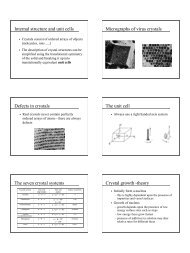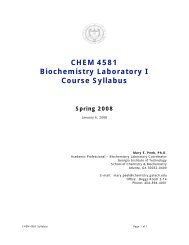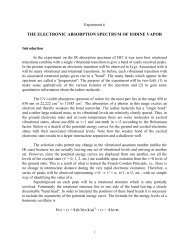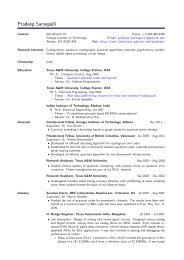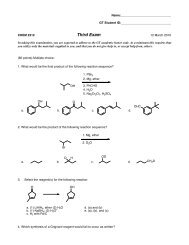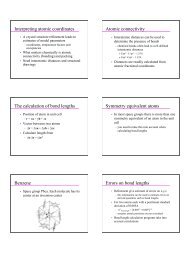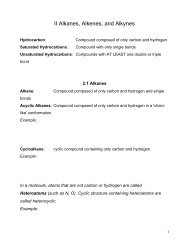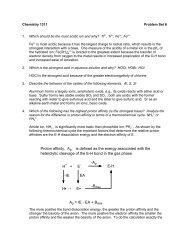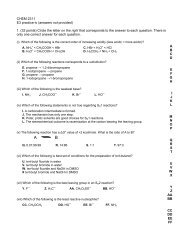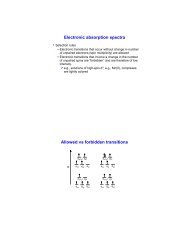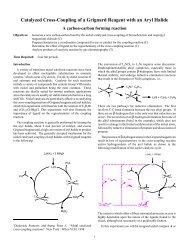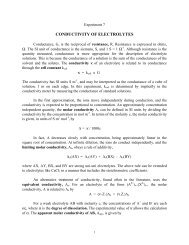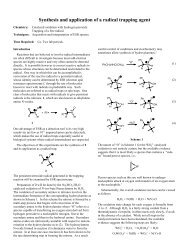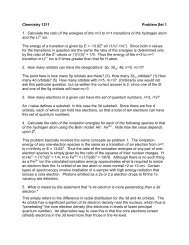Homework 1 Solutions
Homework 1 Solutions
Homework 1 Solutions
You also want an ePaper? Increase the reach of your titles
YUMPU automatically turns print PDFs into web optimized ePapers that Google loves.
3.1 Solution<br />
First calculate the Johsnon Noise, V therm = 4Rk b T ∆f. For our case ∆f = 500MHz,<br />
yielding V therm = 2.9µV.<br />
Now we calculate the V = IR.<br />
V = IR (125)<br />
= 1Ohm 〈µ〉(1mm)<br />
2r 3 (126)<br />
= 1Ohm γ H(1mm)<br />
〈σ<br />
4r 3 Z 〉 (127)<br />
= 1Ohm γ H(1mm)<br />
T r[σ<br />
4r 3 z ρ(T )] (128)<br />
where ρ(T ) is the thermal density matrix at temperature T and γ H = 5.6 Nuclear<br />
Bohr Magnetons = 5.6 × 5.5 × 10 −26 J/T . We need to find r such that V = V therm<br />
We now examine ρ(T ) at two temperatures. At 0 K, the thermal density matrix<br />
is always the ground state. (Proton spin points along the magnetic field).<br />
Consequently,T r[σ z ρ(T )] = 1. We can then calculate the distance to be r = 29<br />
nm. This is already difficult.<br />
For part b we look at the spin at temperatute T =300K. As we discussed in class<br />
this results in a very small magnetic moment. T r[σ z ρ(T )] = 4x10 −5 . This leads to a<br />
distance of r = 1.1nm.<br />
Single spin measurements of electrons involving nm leads and devices at 4K has<br />
been shown. A single spin measurement of a nuclei has been performed in atoms<br />
using the hyperfine interaction to couple the nuclear magnetic dipole to the electron<br />
magnetic dipole and then using the fine structure to couple the electron magnetic<br />
dipole to the electric dipole of the atom.<br />
2. Single molecule fluorescence experiments at room temperature are possible.<br />
Why is this the case (qualitative and/or quantitative argument). Hint: These<br />
experiments involve visible light and an electron dipole.<br />
3.2 Solution<br />
Single molecule NMR is hard at room temperature because the magnetic dipole of<br />
proton is small and the residual or effective magnetic dipole at room temperature is<br />
tiny.<br />
Electric dipole of a molecule is much larger than the magnetic dipole of a nucleus<br />
and, therefore, generates a larger electro-magnetic field when oscillating. See the<br />
17




